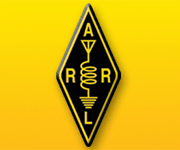Undergrad Radio Amateur Uses Reverse Beacon Network in Research Project
A Virginia Tech undergraduate researcher and radio amateur has used Super Dual Auroral Radar Network (SuperDARN) and Reverse Beacon Network (RBN) data to study how solar flares impact HF radio propagation over the entire dayside — the time Earth is in sunlight — with communication loss related to both flare intensity and distribution. Carson Squibb, KM4MBQ, recently summarized his findings in a poster presentation, “Dayside Ionospheric Response to X-Class Solar Flare Events Observed with Reverse Beacon Network High Frequency Communication Links.” As most HF operators understand, higher-intensity flare events can cause complete signal loss on HF, while weaker flares may only partly inhibit radio propagation.
According to Squibb’s poster, a solar flare is an event in which the Sun emits high levels of ultraviolet and X-ray radiation, resulting in increased photoionization in the ionosphere, primarily in the D-layer, which is largely responsible for absorption of HF radio waves. So, as ionization increases during flare events, communication can be diminished or lost completely. Such fadeouts can occur in minutes, while subsequent recovery can take hours, “which is why understanding these flare effects is of critical importance,” Squibb said.
According to Squibb, the rate of communication loss is related to the increase in X-ray intensity, and the period of recovery is influenced by both flare intensity and the rate of decline in X-ray flux after peaking. Squibb determined that lower frequencies experience fades in propagation prior to the flare peak, with recovery taking longer, while the degree of loss is more severe as frequency decreases.
Squibb’s poster explains that SuperDARN detects a ground-scatter band that results from waves reflecting from the ionosphere and ground, and that this band is degraded during solar flare events. To determine the spatial distribution of flare effects, Squibb used data from four radars across North America. He used the RBN — an array of passive receivers which detects Amateur Radio signals and posts identifiable call signs on the Internet — to measure HF communication. Squibb chose 3.5, 7, 14, 21, and 28 MHz for study. X‐ray flux data within the 0.05-0.4 nm and 0.1-0.8 nm ranges were taken from the GOES-15 geostationary weather satellite.
Squibb said future research should focus on quantifying the relationship between flare characteristics and HF signal fadeout.
Squibb conducted his research under the guidance of graduate student Nathaniel Frissell, W2NAF, and SuperDARN group supervisors Jo Baker and Mike Ruohoniemi, as part of his participation in the Research Experiences for Undergraduates (REU) program sponsored by the National Science Foundation and hosted by the Center for Space Science and Engineering Research (Space@VT). His co-authors included Magda Moses, KM4EGE, of Virginia Tech, and Robyn Fiori of the Canadian Space Weather Forecast Center.
Back





